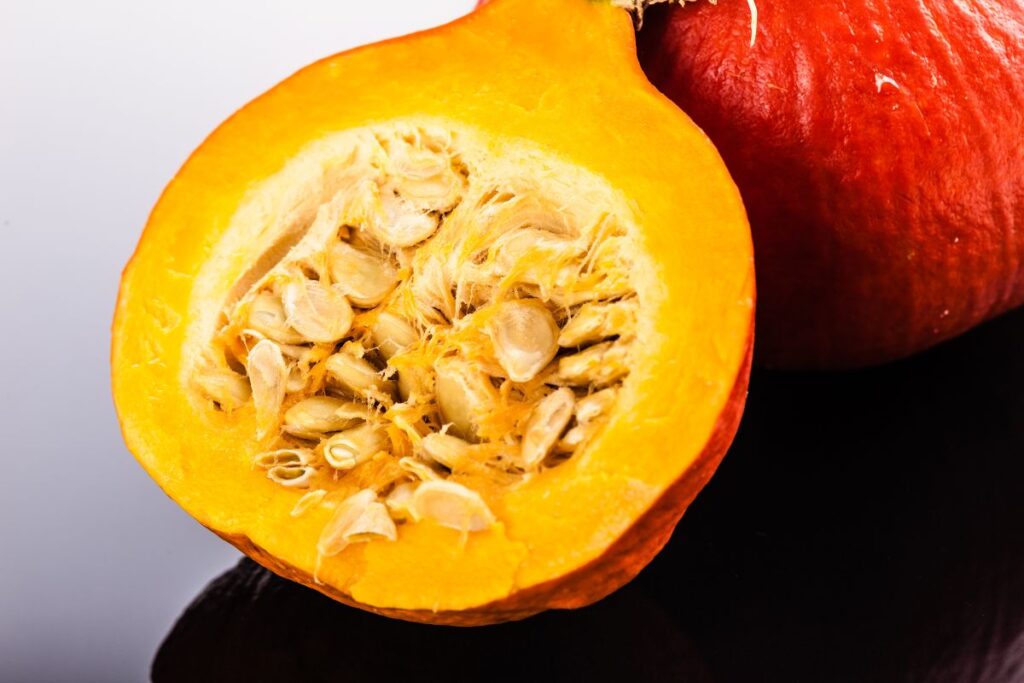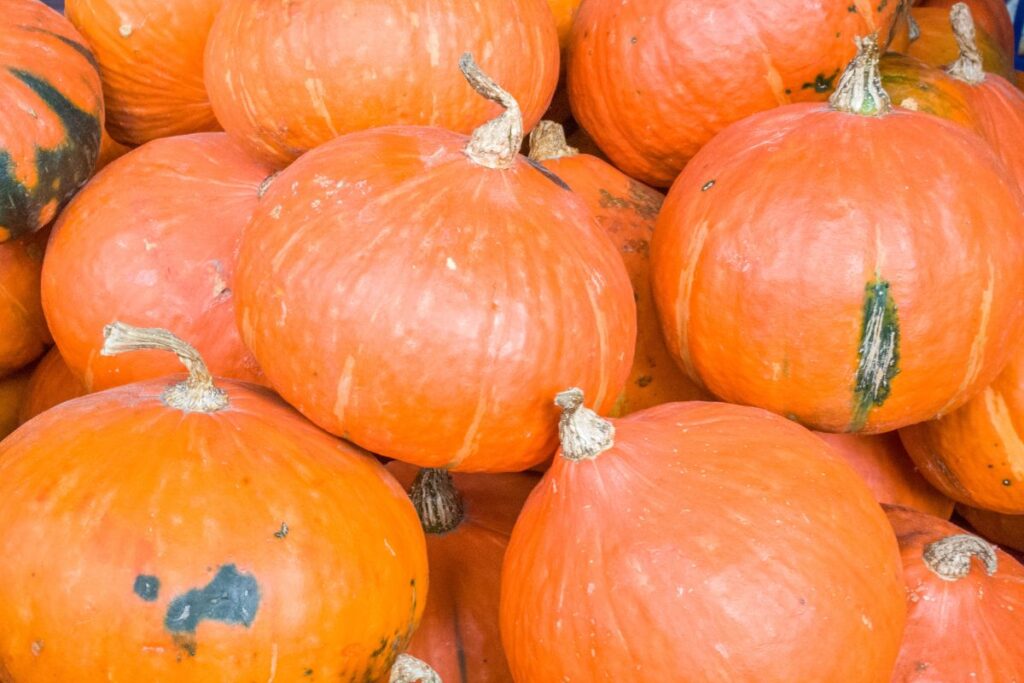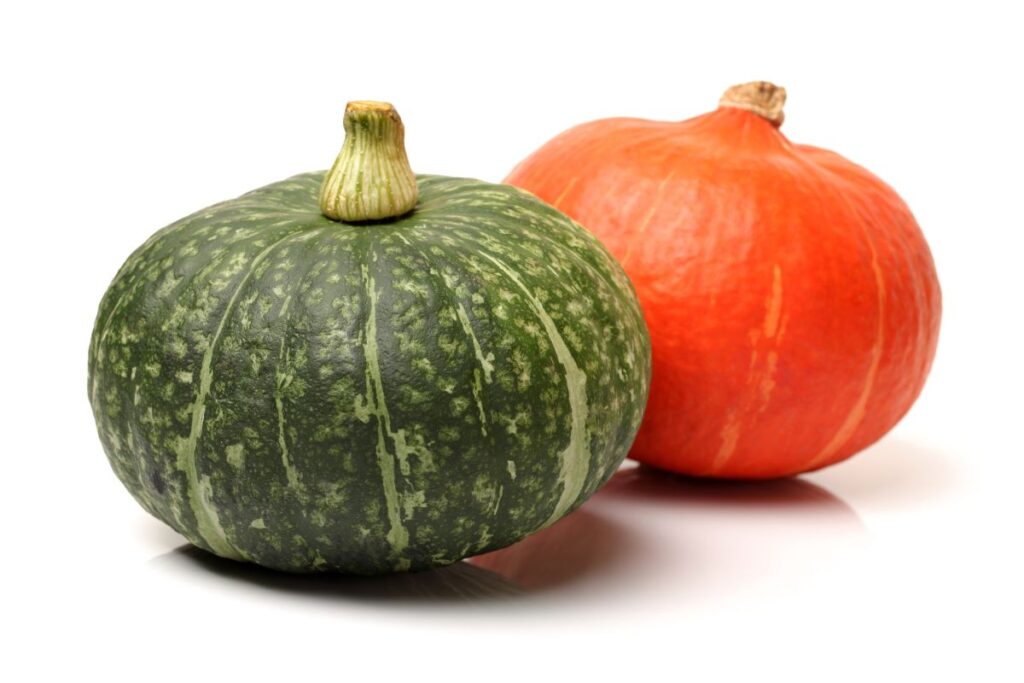Get ready to be wowed by Japanese squash and pumpkins’ bright colors, interesting textures, and delicious flavors. These culinary gems are staples in traditional Japanese dishes and can really take your cooking to the next level.
Let’s uncover the tasty secrets of these versatile veggies! With a rich history, diverse varieties, and seasonal dishes that showcase their beauty, there’s so much to discover.
From learning about the innovative cooking techniques to indulging in sweet and savory recipes that pack a nutritional punch, this journey promises to transform the way you approach these delightful gourds.
So, join us as we delve into the captivating world of Japanese squash and pumpkins and prepare to be inspired.


History and Varieties of Japanese Squash and Pumpkins
How did Japan come to cultivate such a diverse array of squash and pumpkins, each with its own unique history and characteristics? You’ll find that it’s a tale of centuries-old agricultural practices and a deep respect for seasonal eating.
This variety didn’t happen overnight. It was a meticulous process, influenced by climate, geography, and the culinary demands of the Japanese people.
You’ve got the kabocha, a winter squash that’s adored for its sweet, nutty flavor. It’s not just a random preference; the kabocha was selectively bred for its dense, nutrient-rich flesh, making it a staple in traditional Japanese dishes.
Then there’s the Japanese pumpkin, known as ‘kuri,’ which you can identify by its distinctive orange skin. It’s prized for its versatility in both savory and sweet dishes, a direct result of selective cultivation aimed at achieving the perfect balance of sweetness and texture.
Understanding this, you’re in control. You can now select the perfect type of squash or pumpkin for your culinary creations, knowing its backstory and how its unique qualities can elevate your dishes. This isn’t just cooking; it’s embracing a piece of Japanese agricultural artistry.
Seasonal Dishes
As the seasons change, so do the flavors of Japan, inviting you to explore an array of squash and pumpkin dishes that reflect the country’s rich culinary tradition.
In spring, you’ll find young, tender kabocha squash, perfect for light soups and salads that awaken your palate. Don’t just stick to the familiar; experiment by adding it to risottos or blending it into a vibrant, creamy dressing.
Come summer, you’ll notice an abundance of zucchini-like squashes. It’s your cue to grill them alongside other seasonal vegetables or incorporate them into refreshing cold dishes.
Think outside the box and spiralize them into noodles for a low-carb, refreshing salad, or pickle them for an umami-packed side dish.
Autumn heralds the peak of pumpkin season. It’s time to master hearty stews and rich, savory pies that’ll become your go-to comfort foods. Challenge yourself by using pumpkin in unconventional ways – perhaps a pumpkin tofu curry or a savory pumpkin pancake.
Winter demands warmth, and that’s where simmered dishes shine. You’re in control; adapt traditional recipes to suit your taste.
Maybe add a twist to your nabemono (hot pot) with different types of squash or enrich your soups with a blend of Japanese pumpkin for a deeper flavor.


Cooking Techniques for Japanese Squash and Pumpkins
Mastering the art of cooking Japanese squash and pumpkins involves understanding a range of techniques that’ll elevate your dishes. You’ve got to grasp the basics, then push the boundaries to truly make these ingredients shine.
Steaming is your go-to for preserving flavors and nutrients. It’s straightforward; cut your squash into even pieces, place them in a steamer, and let the gentle heat do its work. You’ll find steamed squash perfect as a side or a base for more complex salads.
Roasting unlocks a depth of flavor you won’t get from other methods. Toss chunks with a bit of oil, salt, and your favorite spices, then roast until caramelized. This technique transforms the squash into a versatile component that’s equally at home in savory and sweet dishes.
Don’t overlook the power of grilling. Slices of Japanese squash or pumpkin, brushed with a little oil, take on a delightful char and smokiness that’s hard to resist. It’s a quick way to add a punch of flavor, perfect for those who want to keep things exciting.
Sweet and Savory Recipes
After exploring various cooking techniques, let’s dive into some enticing sweet and savory recipes that highlight the versatility of Japanese squash and pumpkins. You’ve got the power to transform these humble ingredients into dishes that’ll impress any palate.
First up, try your hand at a savory roasted kabocha squash soup. It’s simple: roast the squash to concentrate its sweetness, then blend it with stock, onions, and garlic sautéed in your best olive oil.
Season with salt, pepper, and a dash of nutmeg for that perfect flavor balance. You’ll control the texture by adjusting the amount of stock—make it as thick or as smooth as you prefer.
For a sweet twist, bake a Japanese pumpkin pie. Substitute traditional pumpkin with kabocha or Kuri squash for a denser, sweeter pie.
The secret’s in the spices: cinnamon, ginger, and cloves, all measured to your liking. You’re in charge of the sweetness too; adjust the sugar to suit your taste.
Nutritional Benefits of Japanese Squash and Pumpkins
Beyond their delightful flavors, Japanese squash and pumpkins pack a nutritional punch that can bolster your health. You’ll find they’re rich in vitamins, minerals, and antioxidants, essential components that support your body’s overall well-being.
Integrating these vegetables into your diet can be a strategic move to enhance your nutritional intake.
Japanese squash and pumpkins are loaded with Vitamin A, crucial for maintaining good vision, skin health, and immune function. You’re also getting a good dose of fiber, which aids in digestion and helps you feel full longer, supporting your weight management goals.
Additionally, these vegetables are a source of Vitamin C, an antioxidant that plays a key role in collagen production and immune defense.
What’s more, the potassium content in these veggies can help you manage blood pressure levels, while the low calorie count ensures you’re not overloading on energy intake. They’re also surprisingly versatile, fitting into a range of dishes from soups to desserts.
Conclusion
So, you’ve discovered the rich history, varied types, and the myriad ways to cook Japanese squash and pumpkins. You’ve explored both sweet and savory recipes that can transform any meal into a seasonal delight.
Remember, these versatile veggies not only bring a burst of flavor to your dishes but also pack a nutritious punch.
So, go ahead, experiment in your kitchen, and let these Japanese gems inspire your culinary adventures. You’re all set to impress with these flavorful, healthful additions to your table.
However, it’s important to note that not everyone may share the same enthusiasm for Japanese squash and pumpkins. Some individuals may have specific dietary restrictions or personal preferences that prevent them from fully enjoying these ingredients.
If you fall into this category or have a different perspective on the culinary use of Japanese squash and pumpkins, we invite you to leave a comment and share your thoughts.
We believe that diverse opinions and experiences contribute to a richer understanding of food and cooking. So, don’t be shy – let’s know what you think!




Konnichiwa! (Hello!) I'm Pat Tokuyama, a Japanese tofu cookbook author, who travels for music, food, and adventure. If you like Japanese tea, checkout some of the newestorganic japanese tea, matcha bowls and noren and more!
** Curious about the Plant Based Japanese Cooking Club? ** Learn more here!